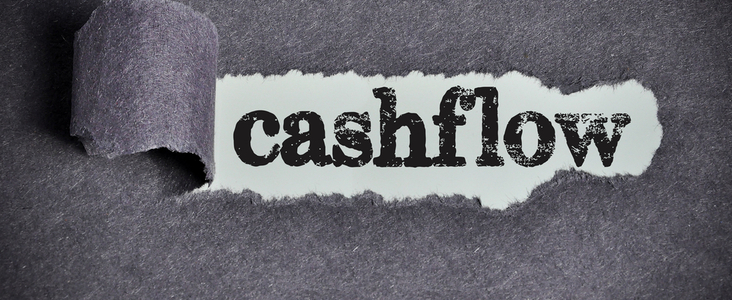
The is the first of the four-part series on cashflow….
In my 30 years in the industry, one constant for small business in Australia has been the stress that people feel when they are constantly worried about cash. The phone rings off the hook with cranky creditors, the ATO is knocking on the door (or calling your mobile at 7 pm) and that family holiday now looks like a one-week camping trip in the bush rather than the French Riviera.
So, why not change it? You can, and we’re going to tell you how.
But first, I want make a clear distinction.
There are two broad types of cash-related issues. Think of cash resources (the total amount of cash available) and cashflow (the speed at which cash is generated and spent by the business).
A good analogy is your blood system. The amount of blood in your system is akin to your cash resources (thankfully, as we grow from babies into adults, we create more blood – the same can’t always be said for growing businesses and their cash resources!). Meanwhile, the rate at which blood pumps through your body and returns to your heart is akin to cashflow.
Got it? Good, now let’s think about how to resolve your cash-related stress.
A methodical approach works best. Like anything else, understanding the underlying cause of the issue is critical to resolving it. Remember, poor cash flow is just a symptom. We’re looking for the cause.
Step 1 – determine the nature of the issue:
Which cash-related issue or issues do you have? Does it relate to cash resources or cash flow (or both)? Or presented in another way…is the issue showing up in your balance sheet, your P&L (or both)?
Step 2 – identify the right tactics (or combination of tactics) to close the gap:
P&L
So, you have determined that your pain is a cash flow issue. It’s possible that it’s coming from the P&L. Here are some tactics that could help you correct what you’re experiencing.
- Defer expenses
- Reduce expenses
- Bring forward revenue
- Increase revenue
Some changes are easier to implement than others. And whilst it is really simple to think about correcting cash flow issues in those ways, some deeper thought needs to go into the ‘knock-on’ effects of what you do. For example, if you are to cut expenses, which expenses do you cut? How far do you cut? What are the other implications? Previous BridgePoint Group commentary on looking at reducing and deferring expenses, can be found here and here.
Are there also tweaks you can do to your cash cycle?
Cash cycle
-
- Speed up invoicing
- Speed up collections
- Right-size & right-time production
- Negotiate more generous payment terms with suppliers
This is all about getting that cash to return to your bank account faster than before. A really simple example would be asking for part-payment up-front, before you deliver the goods or services you are supplying. A less obvious example could come from greater co-operation with customers and suppliers, to ensure you don’t have cash tied up in excessive amounts of inventory, be it raw materials or finished goods.
The Balance sheet speaks to your cash resources, though ultimately it also tells the tale of your cash flow. If the inflows are greater than the outflows, you will by definition accumulate cash.
If you determine that this is one of your issues, some of your options revolve around the following.
Balance sheet
-
- Defer spending
- Reduce spending
- Raise debt capital
- Raise equity capital
Balance sheet issues are the hardest of the cash challenges to overcome. It’s not easy to borrow money or raise equity capital. Sure, you could defer spending but for how long is that sustainable? Is that going to undermine your strategy? And just how do you reduce spending such that cash accumulates again?
Step 3 – implement the tactics and measure the response
It probably goes without saying that identifying the tactics won’t change a thing. Only action will do that. So, of course, you need to implement those tactics and measure the response you get, to judge the effectiveness of the tactics you have identified.
It probably also goes without saying that you may need to deploy a combination of tactics to get the best outcome. For example, why wouldn’t you be looking to increase revenue AND speed up cash collections?
A final word on your response – all too often the short-term gains created by an increased focus on cash are later lost, simply because the focus is lost! This creates a roller-coaster effect where cash swings wildly from good to not so good! So, it is very important that improvements in systems and processes are captured and become the new norm.
You will know that cashflow levels and stress levels have an inverse relationship. Helping small business negate a cash crisis is where BridgePoint Group’s expertise lies. We can help guide your thinking and decision making on the next step for your business.
If you like what you are reading please feel free to share it. All articles are posted on BridgePoint Group’s website and LinkedIn Page. We are located in North Sydney and there are plenty of good coffee places close by if you want to have a chat about how we can help your business.
Over the next few articles, we will take a deeper dive into these issues to help you close the cash gap.
Next up, we will delve into Profit and Loss. Following that a deeper dive into the Cash Cycle. Rounding out will be looking at Balance Sheet nuances.
Regards
Neil Parker
